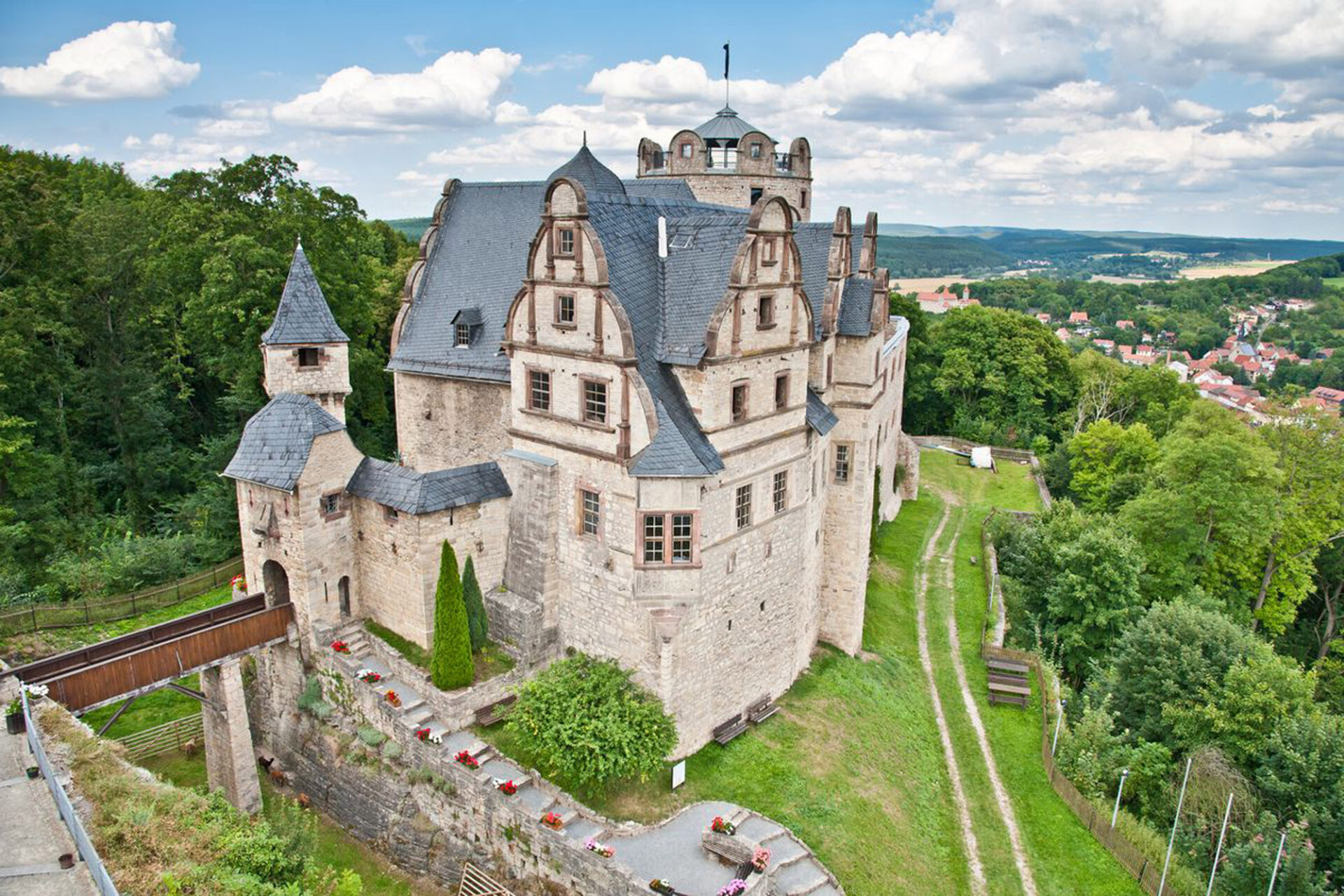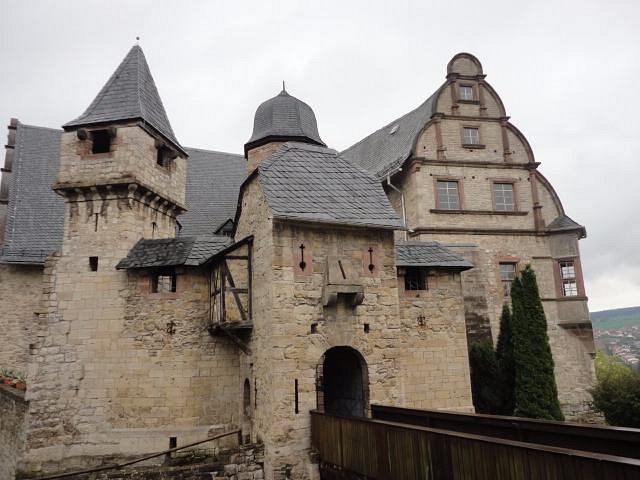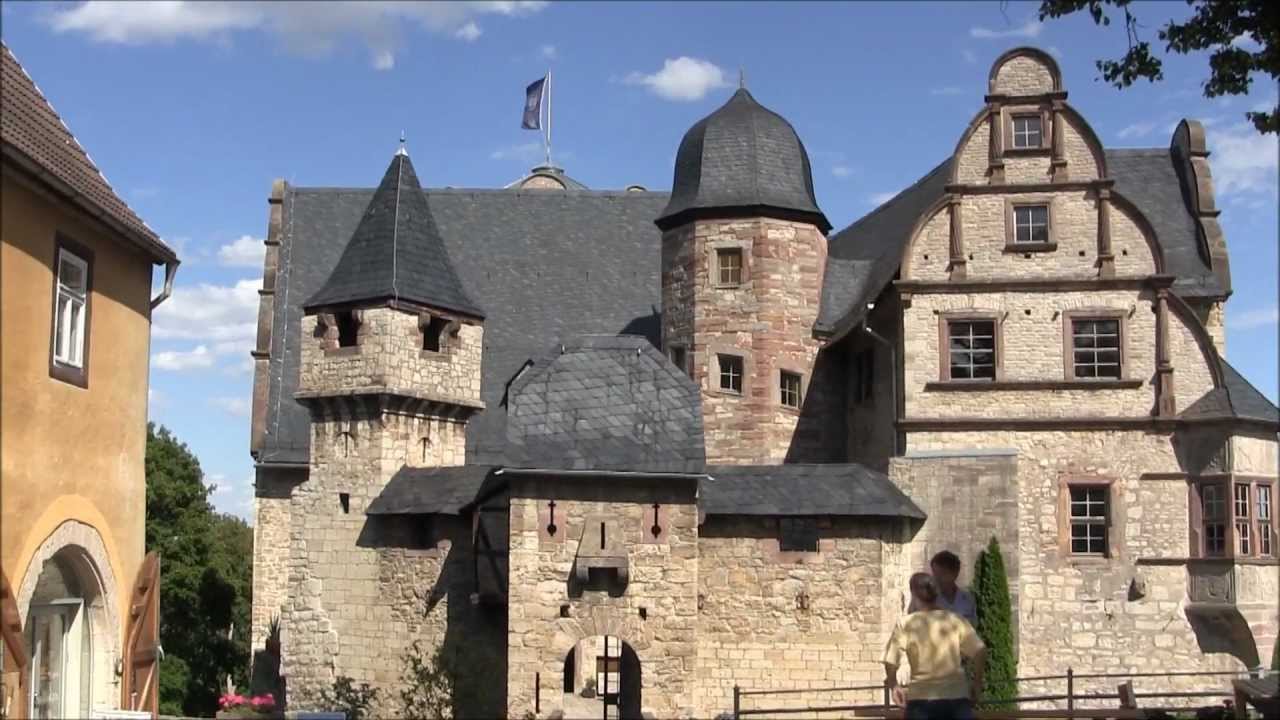Unveiling Castle Kranichfeld: Thuringia’s Renaissance Jewel Overlooking the Ilm Valley

Nestled high above the picturesque town of Kranichfeld in Thuringia, Germany, stands the magnificent Oberschloss Kranichfeld. This Renaissance palace, once the seat of the princely house of Reuss, is a testament to the region’s rich history and architectural evolution. Originating from an earlier medieval fortification, the palace complex offers a fascinating glimpse into the past while continuing to captivate visitors with its historical charm and stunning views.
Historical Origins and Evolution

The Medieval Roots
Castle Kranichfeld’s origins trace back to the medieval period, when it was established to safeguard trade routes through the Ilm Valley. The initial fortification was strategically placed to control and protect these vital routes, reflecting the importance of trade and security in medieval Europe. Over time, the simple castle evolved into a more elaborate complex, reflecting the changing needs and influences of its occupants.
Transition to Renaissance Splendor
The transition from a medieval fortress to a Renaissance palace began in the 16th century. During this period, the original Romanesque residential building was extensively rebuilt, showcasing the architectural style of the Renaissance. The new design integrated both the functional aspects of a fortress and the elegance of Renaissance architecture, creating a unique blend of utility and beauty.
Architectural Features

Outer and Main Courtyards
Today, Castle Kranichfeld retains much of its historical layout, including the distinct division into outer and main courtyards. The outer courtyard, surrounded by a ring wall that remains partially intact, served as the initial line of defense. Within this area, visitors can appreciate the remnants of the castle’s medieval origins.
The main courtyard, accessible through the outer defenses, leads to the heart of the palace complex. Here, the Renaissance elements become more prominent, reflecting the transformation of the castle into a grand residence.
The “Fat Tower”
One of the most notable features of Castle Kranichfeld is the “Fat Tower,” a 27-meter-high fortress structure that has become a prominent observation point. Since 2002, the tower has been open to the public as an observation tower, offering panoramic views of the Middle Ilm Valley and the surrounding landscape. The modern glass dome atop the tower provides an unobstructed vista of the picturesque scenery, making it a favorite spot for visitors and photographers alike.
The Palace Museum

The museum housed within the palace offers a comprehensive overview of the castle’s history, with a particular focus on the period following a significant fire in 1934. The museum’s exhibits detail the reconstruction efforts and the ongoing preservation of the castle, highlighting the challenges and triumphs of maintaining such a historic site.
Visitors to the museum can explore various artifacts and displays that illustrate the palace’s evolution from its medieval origins to its present-day status. The exhibits provide valuable insights into the lives of those who inhabited the castle and the broader historical context of the region.
Conclusion
Castle Kranichfeld stands as a remarkable example of historical continuity and architectural evolution. From its medieval origins to its Renaissance transformation, the castle offers a fascinating journey through time. Whether exploring its ancient courtyards, admiring the views from the “Fat Tower,” or delving into the museum’s exhibits, visitors can experience the rich heritage of this Thuringian gem. As a treasured property of the Thuringian Palaces and Gardens Foundation, Castle Kranichfeld remains a testament to the region’s enduring historical and cultural legacy.
Video
News
The Hanging Temple: China’s 1,500-Year-Old Cliffside Marvel of Faith and Engineering
The Hanging Temple: China’s 1,500-Year-Old Cliffside Marvel of Faith and Engineering Perched precariously on the cliffs of Mount Heng in Shanxi Province, China, the Hanging Temple, also known as Xuankong Temple, Hengshan Hanging Temple, or Hanging Monastery, is an architectural…
The Willendorf Venus: A 30,000-Year-Old Masterpiece Reveals Astonishing Secrets
The Willendorf Venus: A 30,000-Year-Old Masterpiece Reveals Astonishing Secrets The “Willendorf Venus” stands as one of the most revered archaeological treasures from the Upper Paleolithic era. Discovered in 1908 by scientist Johann Veran near Willendorf, Austria, this small yet profound…
Unveiling the Maya: Hallucinogens and Rituals Beneath the Yucatán Ball Courts
Unveiling the Maya: Hallucinogens and Rituals Beneath the Yucatán Ball Courts New archaeological research has uncovered intriguing insights into the ritual practices of the ancient Maya civilization. The focus of this study is a ceremonial offering found beneath the sediment…
Uncovering the Oldest Agricultural Machine: The Threshing Sledge’s Neolithic Origins
Uncovering the Oldest Agricultural Machine: The Threshing Sledge’s Neolithic Origins The history of agricultural innovation is a fascinating journey that spans thousands of years, and one of the earliest known agricultural machines is the threshing sledge. Recently, a groundbreaking study…
Nara’s Ancient Sword: A 1,600-Year-Old Protector Against Evil Spirits
Nara’s Ancient Sword: A 1,600-Year-Old Protector Against Evil Spirits In a remarkable discovery that has captured the attention of archaeologists and historians alike, a 7.5-foot-long iron sword was unearthed from a 1,600-year-old burial mound in Nara, Japan. This oversized weapon,…
The Inflatable Plane, Dropped Behind the Lines for Downed Pilots
Experimental The Inflatable Plane, Dropped Behind the Lines for Downed Pilots The Inflatoplane from Goodyear was an unconventional aircraft developed by the Goodyear Aircraft Company, a branch of the renowned Goodyear Tire and Rubber Company, also famed for the Goodyear…
End of content
No more pages to load











